Subscribe for our newsletter to have the latest stories and curated art recommendations delivered straight to your inbox
What is Digital Fashion? Is it Art and How to Shop for Digital Fashion?
RTISTIQ TEAM
 Like
Like comments
comments SAVE
SAVEIntroduction
The fashion industry’s incessant transition into the digital landscape is a perfect example of how lines between the digital and physical worlds are blurring.
The advent of Metaverse and Web 3.0 has pushed fashion designers to showcase their IRL collections through digital clothing platforms — providing unique ways for people to interact with fashion trends online. Impressive, isn’t it? Well, in this post we will get acquainted with the world of “Digital Fashion” and share ways you can shop for it in 2023! So let’s cut to the chase and dive right in, shall we?
What is digital fashion?
Digital fashion allows consumers to try a virtual dress that has been digitally adapted (virtually fitted) to their bodies through “Virtual Try On” technology powered by Augmented Reality. The idea is to build a fashion product or culture in which the digital dress will become as exclusive as the real one. Imagine gifting someone a dress that doesn’t physically exist. That’s digital fashion for you. It successfully represents the link between virtual reality and tailoring, but shouldn’t be boiled down to just a glorified version of an Instagram filter.
Is digital fashion an art?
Yes, digital fashion is an art. It is essentially an extension of a designer’s digital illustrations. But, digital fashion is more than simply an art gallery. It is an opportunity for fashion designers to showcase their creativity by using digital fashion platforms that allows them to develop more revenue streams. After all, fashion designers can turn their digital outfits into Non-Fungible Tokens (NFTs) and trade them using blockchain.
How to shop for digital fashion?
Now that you know how digital fashion functions, it’s time to get in the game! One of the best ways to shop for digital fashion is through digital
fashion marketplaces. These online marketplaces foster cyber couture and push design boundaries — redefining the world of fashion as we know it.
Here are some of the renowned digital fashion houses and marketplaces worth mentioning in the post. Feel free to check them out as the digital fashion products on them are exciting enough to captivate fashion enthusiasts worldwide
● DRESSX
● UNXD
● Carlings
● Rtfkt
● Happy99
These digital fashion marketplaces function by using real-time Augmented Reality. Consumers can use their camera phones to try digital fashion products for free.
Not just that, consumers will have the choice of transactions when purchasing digital fashion. They can either use “on-chain” or “off-chain” transactions. The former requires users to own a cryptocurrency wallet or open one inside the digital fashion platform, allowing them to turn clothing into a digital asset. The latter involves payment through regular credit cards.
Dont miss out on our digital fashion auction taking place between the 26- 29 Jan 2023. Click here and get ready to bid on exclusive items for your digital collectibles. It’s your opportunity to build a spectacular digital wardrobe and collect digital fashion art to show off online!
Final thoughts!
“Digital Fashion” is still an emerging trend that has the potential to make digital wearables and fashion NFTs more accessible — especially since it is powered by exciting innovations. However, brands need to make more and more consumers aware of the attractive features of digital fashion, more importantly, its affordability. We believe that the meta-closet or digital closet is the way of the future and people will give attention to building a digital wardrobe parallel to building a physical one. Did you find this post helpful?
Let us know in the comments. Also, don’t forget to check out other informative posts in the blog!
Explore our Curated Collections
SIMILAR ARTICLES
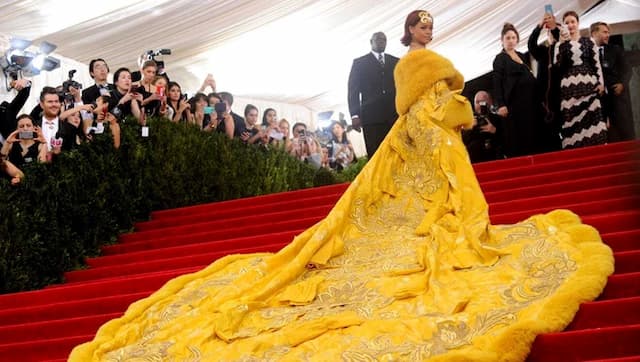
ART AND HIGH FASHION
After months-long waiting and the 2020 cancellation, the Met Gala is about to take place on Monday, September 13. The high-profile event is a fundraising benefit for the Metropolitan Museum of Art in New York City. Under her decades-long patronage of the fashion editor-in-chief of Vogue USA, Anna Wintour has transformed this social and charitable event into the “Fashion’s biggest night out”. Each year it attracts larger crowds and an impressive list of A-class celebrities among the guests and co-hosts. The Costume Institute will host its first two-part exhibition, on the theme of American fashion, during 2021 and 2022. Part one, “In America: A Lexicon of Fashion,” will open in the Anna Wintour Costume Center on September 18, 2021, and will remain on display when “In America: An Anthology of Fashion,” opens on May 5, 2022, in the period rooms of the American Wing. Both shows will run through September 5, 2022. Rihanna wearing a spectacular gown created by the Chinese designer Guo Pei at Met Gala 2015 The biggest names in Hollywood are set to descend upon the Metropolitan Museum of Art in a breathtaking red-carpet parade of avant-garde ensembles celebrating fashion as a form of art. On this occasion, we are looking back at the permanent exchange of ideas, concepts, and inspiration between designers and artists. Elsa Schiaparelli The Lobster Dress designed by Elsa Schiaparelli in 1937 in collaboration with Salvador Dali A 2017 reedition of Schiappirelli’s design One of the most avant-gardist fashion designers, who remains a rich source of inspiration even today, is Elsa Schiaparelli. She had a keen interest in Dadaism and Surrealism and was part of the social circle of Francis Picabia and Man Ray. Besides being credited with creating the first sweater with a surrealist trompe l’oeil image of a bow, the first newspaper print (repurposed by Jean Paul Gaultier for his couture debut and now considered a staple look of the 90s after being worn by the fictional character Carrie Bradshaw in the HBO TV series Sex and the City) and the first wrap dress (later revisited and adopted by the American designer Diane von Fürstenberg in the 1970s), she is well known for her many collaborations with some of the most innovative artists from the 1930s and ’40s. The Swiss artist Alberto Giacometti cast in bronze one-of-a-kind buttons for Schiappirelli’s coats. Man Ray often asked her to model for his photographs. Meret Oppenheim designed a fur bracelet in 1936 for Schiaparelli’s winter collection, the piece was the precursor to the artist’s iconic surrealist fur-covered teacup. An evening coat embroidered in a pattern that reads simultaneously as a vase and two confronting was a product of her collaboration with Jean Cocteau. Perhaps her most famous collaboration was with the surrealist Spanish artist Salvador Dali. In 1935 the duo designed a perfume bottle shaped like a telephone dial, in 1937 the Shoe hat was inspired by a photograph of Dalì with his wife’s slipper on his head. Often considered scandalous, as the artists themselves and the female figures that wore dresses (Wallis Simpson were the Lobster Dress on her honeymoon), Schiaparelli’s couture creations stood the test of time. The House of Schiaparelli decided to reedit the infamous Lobster dress for the Spring 2017 season. Schiaparelli's collaborations with Dada and Surrealist artists resulted in some of the most renowned works of twentieth-century haute couture Dior Fall/winter 2020/2021 collection, Le Mythe Dior inspired by surrealist female artists Maria Grazia Chiuri Another couturier whose creativity has been shaped by feminist art is the head designer of Dior, the Italian designer Maria Grazia Chiuri. In 2020 Chiuri commission Judi Chicago, the subversive feminist artist, to create a set-cum-art installation for the iconic couture house’s spring runway show at the Musée Rodin in Paris. More recently, for the fall/winter 2020/2021 collection (Le Mythe Dior), during the difficult times of the Covid-19 pandemic, the designer created a fairytale world populated by nymphs and naiads, Venus, Narcissus, a faun and inspired by the less-known Surrealist artists and muses: Lee Miller, Dora Maar, Dorothea Tanning, Leonora Carrington, and Jacqueline Lamba. “Surrealist images manage to make visible what is in itself invisible,” Chiuri said of the collection in a statement. “I’m interested in mystery and magic, which are also a way of exorcising uncertainty about the future.” Yves Saint Laurent The Mondrian Dress design by Yves Saint Laurent in 1965 Piet Mondrian Composition C (No.III) with Red, Yellow and Blue No other moment in the history of fashion captured the public’s imagination better than the Mondrian dress designed by the French designer Yves Saint Laurent in the 1960s. This period coincided with the women’s liberation movement when women started wearing mini-skirts and loose-fitting dresses that placed fewer constraints on the body. Saint Laurent realized that the planarity of the A dress, very fashionable at that time, was an ideal field for color blocks. He demonstrated a great skill of dressmaking, setting each block of jersey to create the resemblance with the Mondrian paintings and at the same time to accommodate the curves of the female body in the grid of seams. Yves Saint Laurent went on to create haute couture outfits inspired by other artists such as Van Gogh and Picasso, but his Mondrian dress remains until today one of the most recognizable designs and at the same time a cultural symbol of the 60s. Few designers can claim such a profound influence on the way women dress as Yves Saint Laurent. The pieces he pioneered – the man’s tuxedo, cut for a woman’s body, the safari jacket, the trench coat – are now so congruous with women’s wardrobes that they seem like they have been there forever. The marriage between art and fashion is more stable than ever. As recent as 2020, Moschino’s Creative Director Jeremy Scott took inspiration from famous painters in his Spring/Summer 2020 collection with models appearing to have stepped straight out of a Picasso’s cubist masterpieces. Pierpaolo Piccioli, the creative director of the Italian house Valentino envisioned for his most recent collection a dialogue with more than 15 emerging artists and established artists—including names like Luca Coser, Jamie Nares, Wu Rui, and Malte Zenses. Discover more artworks by emerging and established artists in our curated collections.
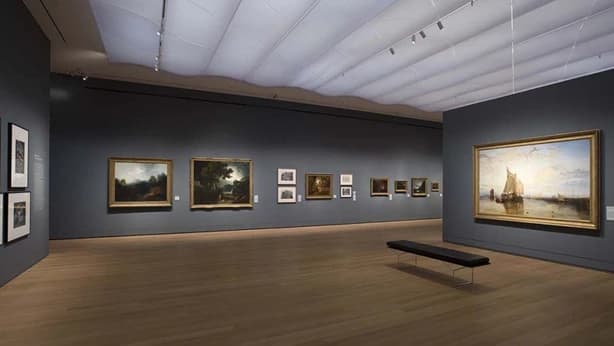
Art Redefined: The Digital Era with Olyvia Kwok-Decani
In a rapidly changing world, the art industry has been profoundly impacted by the digital age and the emergence of millennials as a driving force in shaping its landscape. Olyvia Kwok-Decani, an esteemed expert in the field, provides valuable insights into the pivotal role millennials play in the evolution of art, particularly their influence on art consumption, creation, and the integration of technology. New era in the art market: As we delve into 2023, a significant shift has occurred, with millennials surpassing previous generations in art spending, marking a new era in the art market. The Art Basel-UBS report highlights this trend, revealing that millennials have exceeded boomers in their investment in artwork, leading to a notable increase in sales. Olyvia emphasizes this shift, stating, "Millennials spend four times as much as boomers and double the spending of Gen X." The digital age This has had a transformative shift. Growing up immersed in technology, millennials have wholeheartedly embraced digital art and non-fungible tokens (NFTs) with great enthusiasm. Digital platforms have become fundamental for showcasing and acquiring artwork, fostering a strong sense of community among artists and art enthusiasts alike. Recognizing the significance of these platforms, Olyvia emphasizes, "Social media has emerged as a powerful marketing tool for artists and galleries to engage with the millennial audience, who predominantly consume art digitally." Influence of millennials Artists are adapting their practices to cater to this tech-savvy generation. The integration of digital tools and experiences has become paramount, enabling artists to provide immersive and interactive encounters for their audience. The boundaries between technology and art have blurred, giving rise to innovative forms of expression and exploration. Olyvia notes “that this shift has opened up new avenues for artists to connect with a broader audience and forge stronger bonds within the art community.” Art consumption: Millennials' interest in art extends beyond mere consumption; they are actively leaving their mark as artists. A wave of talented millennial artists has emerged, bringing forth fresh perspectives and themes that captivate the contemporary art scene. Notable names such as Sadie Burnette, Sam Falls, and Lu Yang have garnered recognition for their distinctive approaches, leaving a lasting impact. Millennials prioritize experiences and emotional connections when engaging with art, seeking works that provoke thought and challenge traditional norms. Consequently, politically themed artwork has experienced a surge, as artists utilize their craft to voice opinions and address pressing social issues. Digital engagement Millennials' impact on the art world transcends aesthetics and digital engagement. Olyvia underscores the fact that millennials view art as “enjoyable assets and increasingly consider it a viable financial investment”. Art has become a popular avenue for wealth accumulation among this generation, offering an alternative to conventional investment options. Motivated by financial gains and a desire to support artists, millennials have fuelled the growth of the art market, actively participating in and contributing to the art ecosystem. In conclusion The advent of the digital era has brought about a transformative shift in the art world, with millennials leading the charge. Their profound affinity for technology, quest for meaningful experiences, and financial motivations have redefined the art landscape. From embracing digital platforms to spearheading the creation of immersive art experiences, millennials are reshaping the future of art consumption and creation. As Olyvia Kwok-Decani aptly summarizes, "The millennial influence can be seen in the way art consumption has moved to digital platforms and the innovative approaches artists are taking to engage their audience." With millennials at the forefront, the art world continues to evolve along an exciting trajectory. About The Author Olyvia Kwok Decani Olyvia Kwok Decani has been collecting and investing in art for over 15 years. After graduating from Queen Mary’s University in 2002 with a degree in BSc Statistics, Olyvia opened her first gallery in St. James’s London. With years of experience, alongside in-depth knowledge of the market and an extensive global network, Olyvia continues to be one of the most prestigious and successful individuals in the industry.
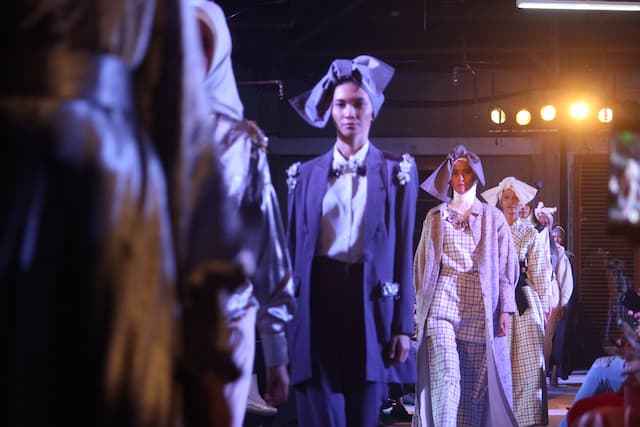
Is The Adoption Of Digital Fashion Really More Sustainable?
Over the past few years, we’ve seen art marry technology in many ways. From NFTs taking over Instagram and the Metaverse completely changing the game with virtual museums and exhibitions, the possibilities are—quite literally—endless. But, of course, it’s not limited to paintings and animations, either! Digital fashion is gaining traction with virtual influencers wearing designer clothing and brands creating digital collections with materials one can only dream of. What Is Digital Fashion? Digital fashion refers to intangible items that exist in virtual environments. AR filters, direct-to-avatar clothes, skins for gaming, and even crypto art that you can purchase for yourself are considered digital fashion. It even includes 3D collections and virtual runway shows! Currently, more and more fashion brands are entering this space as they predict that this market niche will be profitable in the near future. As a result, it might even be easier to implement internal carbon pricing strategies with this technology. In the next few years, we’ll be seeing more and more virtual-native fashion startups emerge, as well as the widespread adoption of this field among mass-market and luxury labels. Fashion’s Detrimental Effect On The Environment Before we dive deeper into digital fashion, let’s first talk about fashion and the planet. It’s no secret that this industry has detrimental effects on our environment. 10% of the total global carbon emissions produced worldwide can be traced to the fashion industry. And it doesn’t end there! Producing clothes dries up our water sources and pollutes rivers and streams. Plus, it’s estimated that the industry creates 92 million tons of textile waste every year. These statistics are staggering. And the thing is that consumers are increasingly aware of the industry’s impact, which means they’re demanding accountability. That’s why we’re seeing fashion brands pivot. From creating clothes out of sustainable materials to repurposing secondhand and vintage fabrics, there’s a clear shift happening. And then there’s digital fashion. Digital Fashion: Is It The Answer? Virtual fashion can change how physical products are manufactured and purchased. With technological advancements and a push for more virtual experiences, it is possible to address multiple environmental issues that the industry is currently facing. Digital fashion eliminates all physical waste, and brands wouldn’t even need to concern themselves with water consumption! Since raw materials are coded in computers, there are no unethical supply chains. There wouldn’t even be any labor issues because the workers are highly competent designers and programmers known to have generally favorable working conditions. As for technological breakthroughs, some of the ideas and methods we’re already seeing are the following: Augmented Reality and 3D Digital Design Brands can reduce waste produced in upstream operations with the help of 3D digital design and augmented reality. Working samples in technology allow brands to show customers their new collections through digital samples. Compared to physical production, 3D garment simulation reduces sample lead time from one month to one day and generates no fabric waste. Some brands that are already adopting this strategy are Adidas and Theory. Digital Avatars For Try Ons Through our virtual avatars, we can purchase made-to-order clothes. With this technology, we can virtually try on the products we plan to buy. By placing orders for clothes we know we like, fashion brands can cut back on production, effectively lowering the number of leftovers and textile waste. Beauty brands like Estée Lauder are already adopting this by creating virtual beauty stores that let you try on products such as lipsticks and foundations. Digital Fashion Shows It’sno surprise that virtual events are more sustainable than physical ones. They generate less waste due to less material fabrication and eliminate the need for large-scale food and beverage services. Digital Fashion Week is a thing now, and it’s unlike physical fashion runway shows. Here, designers can showcase their pieces which wouldn’t even be possible in the physical realm. Addressing Overconsumption With Digital Fashion Aside from the incredible technological advancements being created in this space, digital fashion might also be just what we need to combat overconsumption. Take a good look at your wardrobe. Are there clothes that you barely ever wear? Unfortunately, people have more clothes than they need, and the adoption of digital fashion can change this. A digital-only garment has less impact on the environment, and if it proves to meet the customer’s needs to have new, exciting clothes all the time, this will be a big win for sustainability. The Future of Digital Fashion We can all agree by now that the future of fashion is digital. It’s definitely here to stay and slay! The sooner we adopt it, the sooner it will have an impact on how we consume clothing and even redefine our relationship with the outfits we wear. With digital fashion, the industry might finally be able to turn the tide and create more sustainable solutions for the sake of the planet and everyone in it. Dont miss out on our digital fashion auction taking place between the 26- 29 Jan 2023. Click here and get ready to bid on exclusive items for your digital collectibles. It’s your opportunity to build a spectacular digital wardrobe and collect digital fashion art to show off online!
ARTICLES ON ART AND TECHNOLOGY
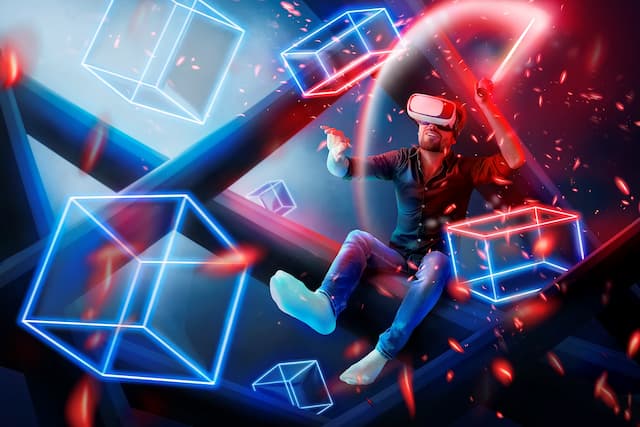
ART AND TECHNOLOGY
What is Digital Fashion? Is it Art and How to Shop for Digital Fashion?
Introduction The fashion industry’s incessant transition into the digital landscape is a perfect example of how lines between the digital and physical worlds are blurring. The advent of Metaverse and Web 3.0 has pushed fashion designers to showcase their IRL collections through digital clothing platforms — providing unique ways for people to interact with fashion trends online. Impressive, isn’t it? Well, in this post we will get acquainted with the world of “Digital Fashion” and share ways you can shop for it in 2023! So let’s cut to the chase and dive right in, shall we? What is digital fashion? Digital fashion allows consumers to try a virtual dress that has been digitally adapted (virtually fitted) to their bodies through “Virtual Try On” technology powered by Augmented Reality. The idea is to build a fashion product or culture in which the digital dress will become as exclusive as the real one. Imagine gifting someone a dress that doesn’t physically exist. That’s digital fashion for you. It successfully represents the link between virtual reality and tailoring, but shouldn’t be boiled down to just a glorified version of an Instagram filter. Is digital fashion an art? Yes, digital fashion is an art. It is essentially an extension of a designer’s digital illustrations. But, digital fashion is more than simply an art gallery. It is an opportunity for fashion designers to showcase their creativity by using digital fashion platforms that allows them to develop more revenue streams. After all, fashion designers can turn their digital outfits into Non-Fungible Tokens (NFTs) and trade them using blockchain. How to shop for digital fashion? Now that you know how digital fashion functions, it’s time to get in the game! One of the best ways to shop for digital fashion is through digitalfashion marketplaces. These online marketplaces foster cyber couture and push design boundaries — redefining the world of fashion as we know it. Here are some of the renowned digital fashion houses and marketplaces worth mentioning in the post. Feel free to check them out as the digital fashion products on them are exciting enough to captivate fashion enthusiasts worldwide ● DRESSX ● Replicant ● Auroboros ● DIGITALAX ● The Dematerialised ● Tribute Brand ● XR Couture ● UNXD ● The Fabricant ● Carlings ● Rtfkt ● Happy99 ● Republiqe These digital fashion marketplaces function by using real-time Augmented Reality. Consumers can use their camera phones to try digital fashion products for free. Not just that, consumers will have the choice of transactions when purchasing digital fashion. They can either use “on-chain” or “off-chain” transactions. The former requires users to own a cryptocurrency wallet or open one inside the digital fashion platform, allowing them to turn clothing into a digital asset. The latter involves payment through regular credit cards. Dont miss out on our digital fashion auction taking place between the 26- 29 Jan 2023. Click here and get ready to bid on exclusive items for your digital collectibles. It’s your opportunity to build a spectacular digital wardrobe and collect digital fashion art to show off online! Final thoughts! “Digital Fashion” is still an emerging trend that has the potential to make digital wearables and fashion NFTs more accessible — especially since it is powered by exciting innovations. However, brands need to make more and more consumers aware of the attractive features of digital fashion, more importantly, its affordability. We believe that the meta-closet or digital closet is the way of the future and people will give attention to building a digital wardrobe parallel to building a physical one. Did you find this post helpful? Let us know in the comments. Also, don’t forget to check out other informative posts in the blog!
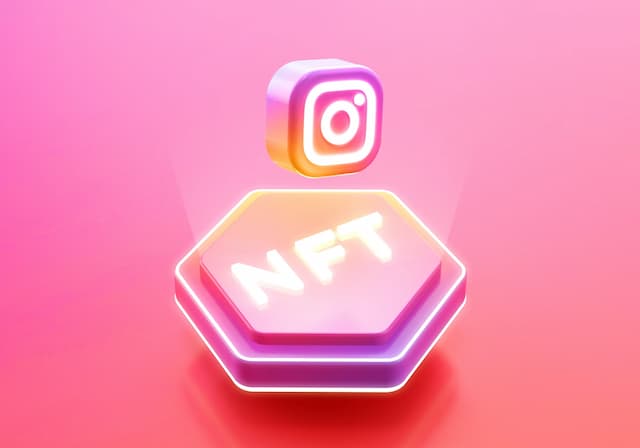
ART AND TECHNOLOGY
NFTs Come to Instagram
After many months of anticipation, Instagram’s CEO Adam Mosseri revealed a new Instagram update that will integrate sharing of NFTs into its platform. Users, collectors and creators will be able to view, share and engage with the NFTs on their feed, stories, and in messages. This will be a great way to display the digital assets they own on their profiles and view the tokens of their favoured artists, politicians or other friends they follow. Clicking on the tag will display the name of the creator and owner. The company is starting small with selected key athletes, models, and other influencers in order to test waters before building further on it. They want to learn from the community in the process and make Web3 technology accessible to a broader audience. An eventual full rollout will be available as Instagram expands this feature across the rest of their property including Facebook and their popular virtual reality Oculus programs. Adam Mosseri made a video explaining the entire NFT integration saying “I want to acknowledge upfront that NFTs and blockchain technologies and Web3 more broadly are all about distributing trust, distributing power.” Mosseri also emphasised that support for NFTs on Instagram could help introduce the technology to a much broader range of people. In January this year, Twitter introduced NFTs on the platform as hexagon-shaped profile pictures. An icon in the corner of Instagram posts of NFTs also appears as a hexagon. The complete video be viewed here: https://twitter.com/mosseri/status/1523655590672695296 Artists will be able to connect their digital wallets to their profiles and instantly keep their followers involved with any work that has been done as well as sell to their fans. The company is acquiring and aggregating public data from open blockchains such as Ethereum and Polygon, which helps to highlight who owns what. The Solana and Flow blockchains will be integrated next. Creators can link digital wallets such as MetaMask, Rainbow, and Trust Wallet, and will soon be able to connect their Coinbase Wallet, Dapper, and Phantom. Instagram’s integration of non-fungible tokens could lead to mainstream adoption of NFTs and support creators’ ability to make a living.

ART AND TECHNOLOGY
Protecting Your Digital Assets and NFTs
With the rising popularity of NFTs and blockchain technology, it has become extremely important for NFT owners to protect their digital assets from theft or hackers. Below are a few tips you can follow to protect your NFT collection: Never disclose the private key or seed phrase of your wallets When you buy an NFT it resides in your wallet. Wallets like Metamask have a seed phrase and each account in it has a private key. Both of them should be kept secret and should not be shared with anyone. Sharing these will give the control of your wallet to the other and they can easily transfer your digital assets/NFTs to their wallets. Keep your digital assets/NFTs in multiple wallets In case you hold a large number of NFTs, another way to protect them is to keep them in different wallets. You can use a wallet to purchase the NFTs from different marketplaces and after that you can transfer them to another wallet which you haven't connected with any marketplace. By spreading your NFTs across different wallets, you can minimise the chance of losing all your NFTs as there is less chance of all your wallets getting hacked together. But this comes at a cost, you will have to bear the transaction charges for the wallet to wallet transfers. Use hardware wallets Hardware wallets are another excellent option to protect your Digital Assets. Although it comes at a cost but is one of the safest options to secure your assets. Ledger and Trezor are two most popular options for hardware wallets. These wallets keep the private key offline and thus provide an extra layer of security. Beware of Scammers With NFT marketplaces becoming more popular with the rise in crypto trading, there is also an increase in the number of scammers on these platforms. The most common way of scamming is through Discord DMs saying you have won an NFT from a popular NFT project. Before clicking on any such links you should double check with the NFT Project’s site or with any other community members. It's better not to trust any links which you receive in Twitter, Discord etc from people you don't actually know. Increase your knowledge about NFTs and Marketplaces Whenever you buy an NFT, spend some time to gain knowledge about that NFT project and its future roadmap. You should increase your knowledge about the NFT marketplaces so that you don't fall into the trap of scammers. For example, Opensea shows a blue checkmark next to verified projects. Likewise each platform will have its own way to show authentic NFTs. Self educating is the best way to identify scammers and to be safe from them. Follow the guidelines above to ensure you are able to robustly safeguard your NFTs. Your digital assets are as important and valuable as your physical ones and need an equal level of protection.








